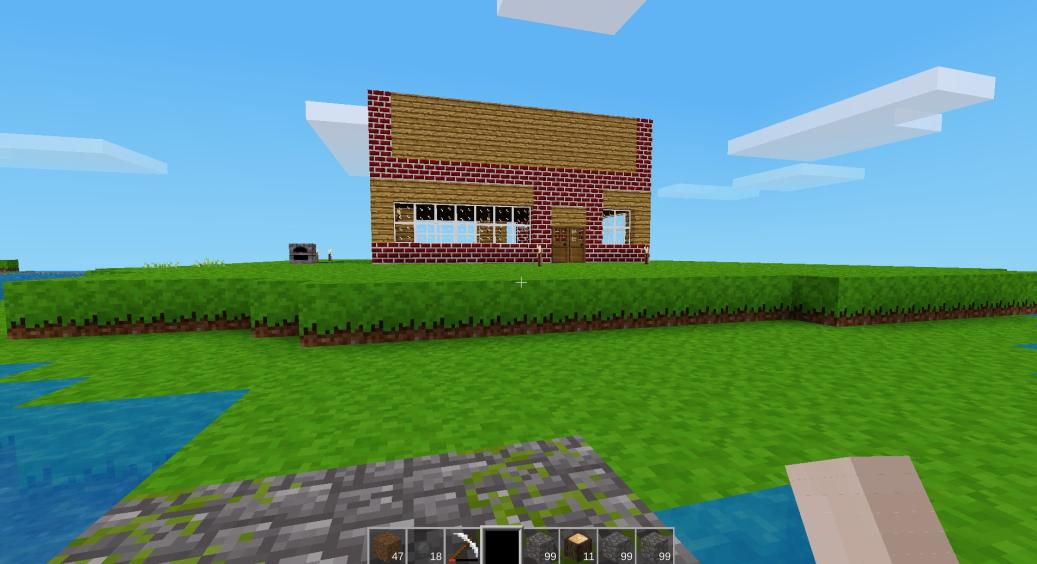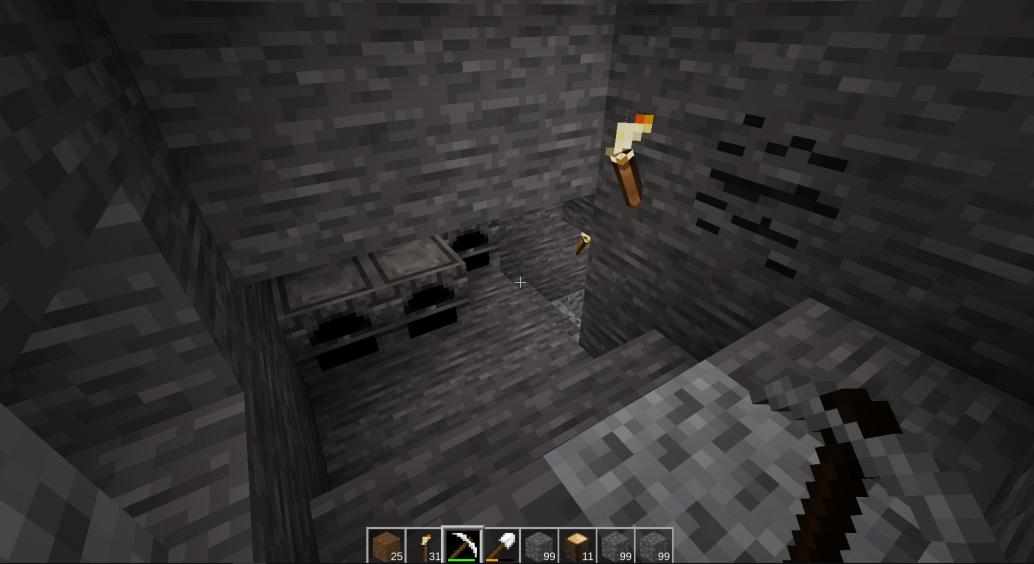Search
[{{{type}}}] {{{reason}}}
{{/data.error.root_cause}}{{{_source.title}}} {{#_source.showPrice}} {{{_source.displayPrice}}} {{/_source.showPrice}}
{{#_source.showLink}} {{/_source.showLink}} {{#_source.showDate}}{{{_source.displayDate}}}
{{/_source.showDate}}{{{_source.description}}}
{{#_source.additionalInfo}}{{#_source.additionalFields}} {{#title}} {{{label}}}: {{{title}}} {{/title}} {{/_source.additionalFields}}
{{/_source.additionalInfo}}- Details
- Category: Computer
- By Daniel Cullen
- Hits: 1507
Minetest (PC)

Minetest
Developed By: Perttu Ahola
Published By: Perttu Ahola
Released: July 31, 2011
Available On: Android, BSD, Linux, macOS, Microsoft Windows
Genre: Sandbox, Survival
ESRB Rating: None specified
Number of Players: Singleplayer, Multiplayer
Price: Free and Open-Source
Note: This review is based on the 5.4.1 build. Please note I do not have the Android, macOS, or BSD versions available, so all information in this review is based on Windows and Linux versions, unless otherwise specified.
Imitation is supposed to be the highest form of flattery, but innovation is generally considered even better. Combining the two is a hard balancing act, but if you manage to pull it off, you can have something world-class as a result. Minetest is both a free and open-source clone of Minecraft, and dares to innovate on it as well, and does a great job of it.
To explain Minetest's basic premise is to explain Minecraft. Minecraft, created by Markus "Notch" Persson, is a 3D survival and building game set in a blocky world where one has to harvest trees, collect food, and mine to get materials to craft new buildings and means of survival. Now owned by Microsoft, it's a beloved game still but has drawn criticism due to no longer being as open to modding as it used to be.
Minetest is an attempt to make a free and open-source alternative that is closer to the spirit of Minecraft's earlier intentions, which was mostly barren world you could mod to fill in the blanks to be filled with content of your choosing. By default, it ships with a basic game that resembles the basics of Minecraft, in that it lets the player have a sandbox to gather resources and build whatever they wish.

Strong Points: Excellent clone of Minecraft while having its own innovations like an active modding community
Weak Points: Can be unstable depending on mods and configuration settings
Moral Warnings: Sterile if obvious player "death" from high falls and lava if damage is enabled
The game code and assets are all available under very permissive licenses that allows for all sorts of modifications. Multiplayer servers can be created and hosted, modifications of all sorts from Lua-based scripting changes to entire replacement of the textures and sounds, and even making entirely new games out of the basic engine are all possibilities available to any player who wishes to modify the source code.
Gameplay is very similar to Minecraft but differs in a few ways. Minecraft was coded in Java and had a limit of 255 blocks up and down, while the world width in question was, in theory, unlimited, constrained only by your hard drive space and the game engine. It started to bug out if you expanded it via real-world exploration of literal days of walking. Minetest is coded in C++ and is only 62,000 blocks wide in any direction (much smaller than Minecraft but still a massive area), but can also be 62,000 blocks either up or down in height. Otherwise, aside from a different code base, assets, and the limitations mentioned, both are block-based sandbox, survival and exploration oriented.
Most official builds ship with a standard survival mode, which can have damage toggled on or off, a "Development Test" game for mod testing, and a Creative building mode can be enabled in the game options. Otherwise, the game has to be expanded via downloading mods from servers hosted by the Minetest developers, where other users create modifications to expand the rather barebones content of the stock engine.
Graphically, it has an 8/16-bit voxel texture and polygon look, and while the stock graphics are quite modest and basic, shaders, tone mapping, various types of filtering, and other enhancements can be applied to make even the stock graphics look like an HD Nintendo 64 game or even better.

Higher is better
(10/10 is perfect)
Game Score - 84%
Gameplay - 19/20
Graphics - 7/10
Sound - 6/10
Stability - 5/5
Controls - 5/5
Morality Score - 98%
Violence - 9/10 (+1 if damage disabled)
Language - 10/10
Sexual Content - 10/10
Occult/Supernatural - 10/10
Cultural/Moral/Ethical - 10/10
Sounds and music are rather sparse and mostly limited to sound effects for various actions like footsteps and mining. Nothing fancy, but like Minecraft, they serve their intended purpose. The game is mostly controlled by keyboard and mouse input on Windows, macOS, and Linux. Android ports are controlled entirely by the touchscreen and have more limited controls.
Stability is a complex question. The stock game is very modest, being able to run on shockingly old versions of Linux, macOS, and Windows back to XP. If the user is willing to attempt to compile their own version from the source, they can likely get it running for anything even older. Android ports are also able to run on nigh all Android supporting devices out of the box. If the player has heavily modded their game, attempts to host large multiplayer servers, or has made heavy alterations to the stock settings, stability can vary. It is also highly recommended to make sure, if one runs on a laptop with both an integrated and dedicated graphics option, to make sure it uses the latter, especially if modding to improve the graphics or simply trying to run a server is attempted.
Morally, Minetest can potentially be a quite child unfriendly game if you host unmoderated servers and use certain mods. However, in vanilla Minetest singleplayer, there is hardly anything to complain about.
Stock Minetest has no animals or other NPCs, so there is no chance to visit any form of violence on others. If damage is enabled, then the player can "die" from high impact falls and from contact with lava, but since it is by default bloodless and goreless first-person view only, death is very sterile. A pile of "bones" is left behind on stock settings to mark where a character died previously, which can be found after respawning. With damage turned off, the game has no violent content to speak of at all.
Stock singleplayer has no language or sexual content to be concerned about. There is no occult or supernatural content. There is a substance called "mese crystals", which is similar to Minecraft's "Redstone", and it also serves as a generic power generating mineral with no (without modding) supernatural connotations. Morally and ethically, stock Minetest is a simple survival and building simulator, and neither aspect has any feature of any moral concern.
Minetest is Minecraft without having to pay a dime, more or less. It has a robust modding community, is just as easy as Minecraft to learn, and will run on utter toasters if need be if you want. Morally, aside from the possible (if generally sterile and bloodless) dying aspect if the damage is turned on, this game is appropriate for children of any age. Parents can even make sure their children play on moderated servers to avoid any potential issues with online play if that is a concern. Given you pay nothing, get the same construction sandbox fun as Minecraft, and can modify it however you like, Minetest is an excellent free alternative to an already super addictive game.








